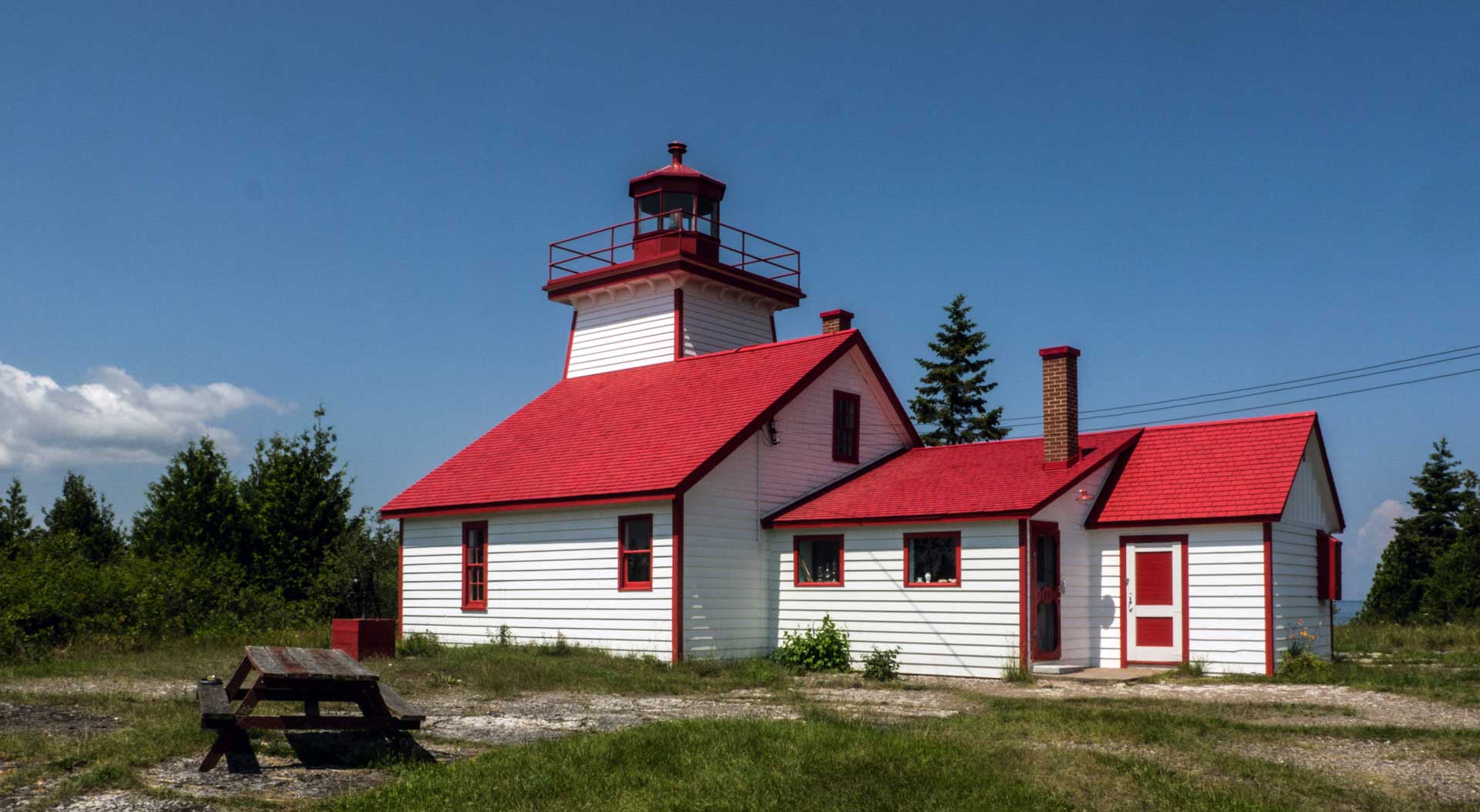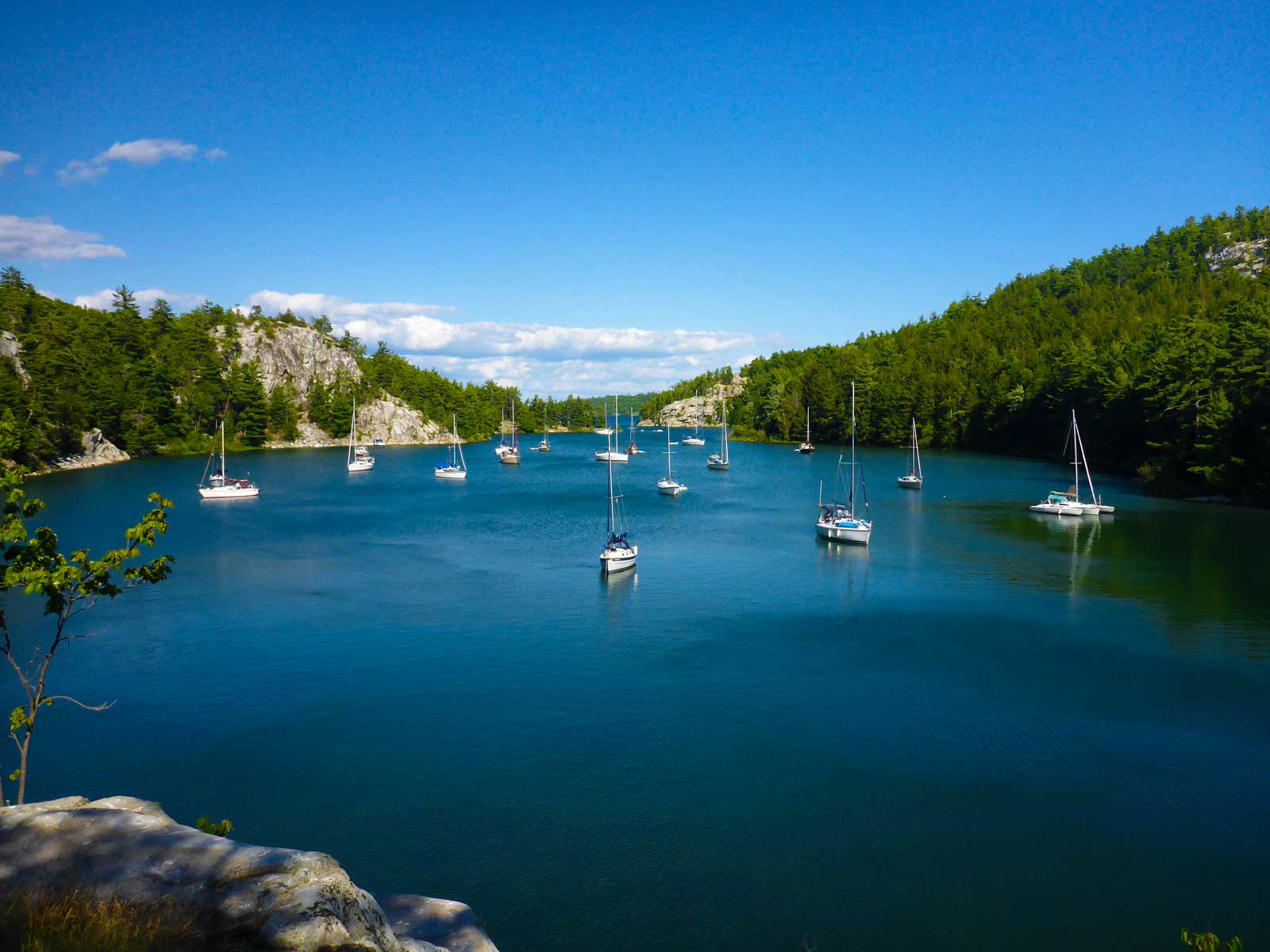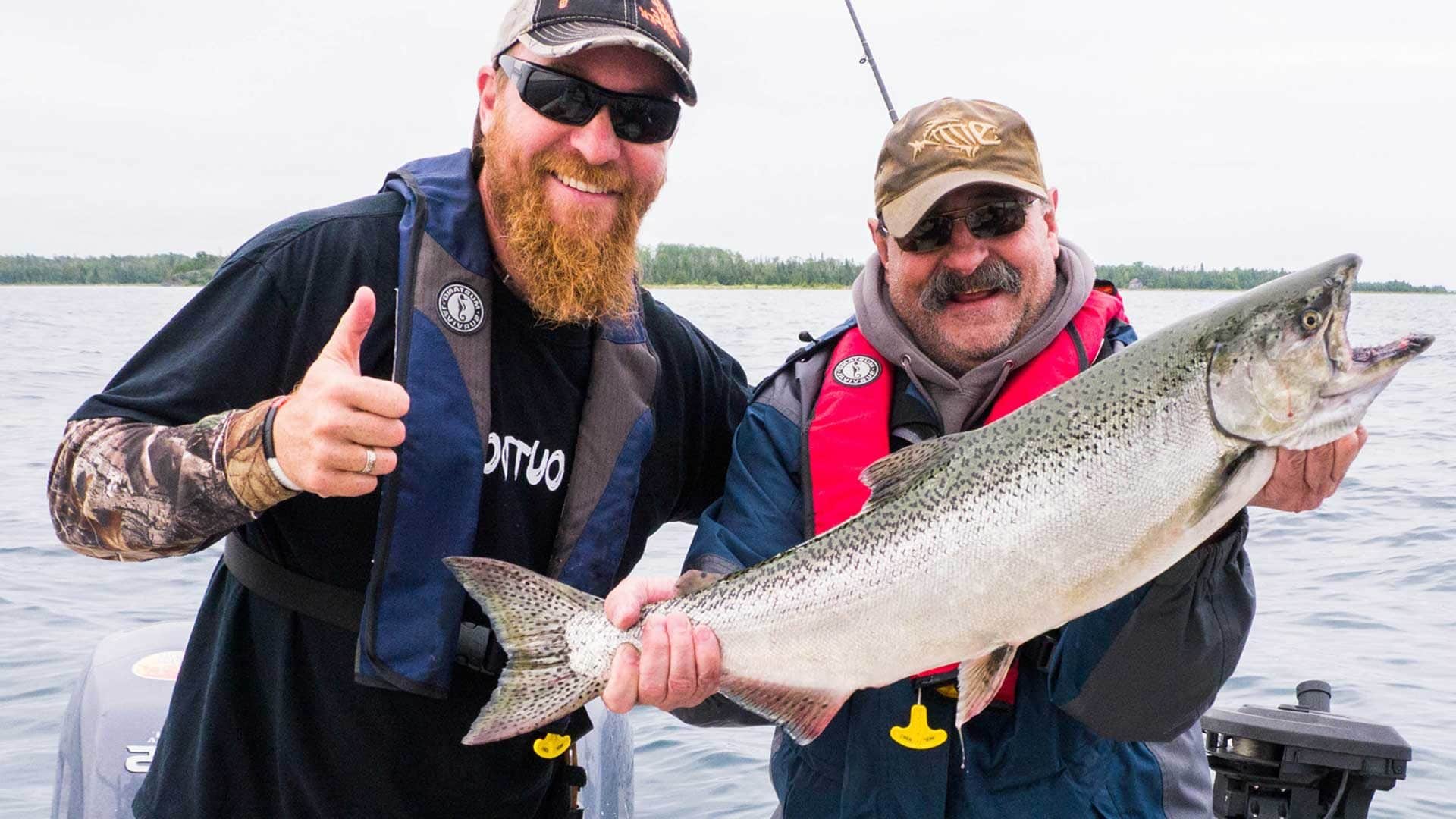Manitoulin’s heritage lighthouses:
still beaming brightly
Manitoulin Island is a marine history buff’s treasure trove, and the Island’s storied marine history is preserved in her surviving lighthouses that ring Manitoulin. Travel, fishing, lumbering, commerce in furs and food, even visiting relatives, all took place on the water from earliest days.
This increasing commercial water vessel traffic in the Great Lakes region brought a boom in lighthouse-building, writes the late Jean Hastings in her little book, ‘Lighthouses of Manitoulin and Surrounding Islands’ (now sadly out of print but available at some Island libraries). “More than 300 lighthouses have been built since 1808, with about 70 located around Lake Huron and Georgian Bay. Between 1866 and 1918, nine lighthouses were built on Manitoulin Island and six on surrounding islands,” most of which can be seen, and some visited, in the present day.
In the 1960s, lighthouses were automated and the need for the lightkeepers of old vanished. With solar power,wrote Ms. Hastings, energy is stored in batteries that are triggered into producing light by the diminishing brightness in the sky.
The first Island lighthouse was built in Little Current in 1866 where the downtown cenotaph now stands. It was essentially a two-story wooden box, with a “bird-cage” on top that protected the lantern. The building of the Swing Bridge in 1913 made the waterfront light obsolete and it was torn down in 1922. Today, an authentic recreation of the original bird-cage light may be seen on Little Current’s waterfront.
Other earliest examples of Island lighthouses, such as the one at Clapperton Island (1866) off Mudge Bay, and Cape Robert (1885) in Sheshegwaning First Nation, unfortunately, have been torn down by the Coast Guard and replaced with steel towers topped with solar-powered flashing lights. Not as aesthetically pleasing, nor historically resonant, but those lights still guide boaters today, and in Sheshegwaning, a visitor can hike the Nimkee Trail and have a picnic where the old lighthouse once stood.
Before the lighthouse was built on Lonely Island (1870), the location off Wiikwemkoong Unceded Territory’s eastern shore presented a potential real danger to navigation. A painting by William Armstrong shows the ship, the ‘Ploughboy,’ in 1859, precariously close to Lonely Island’s formidable rocky promontory, narrowly avoiding certain disaster while carrying a prestigious passenger, Prime Minister John A. Macdonald, across Georgian Bay. Today, Coast Guard helicopters land on a helipad adjacent to the original 46-foot octagonal wooden tower to maintain the sturdy building and its light that flashes every ten seconds, accessible only by boat.
Badgeley Island (1912) near Fraser Bay and close to Killarney also has a range light on steel towers, still working and picturesque. Narrow Island (1890), off Little Current, was dismantled suddenly by the Coast Guard in 1979, leaving only the stone foundation and a new steel tower that holds the old light.
Thanks to longstanding and vigorous local preservation efforts, led by historian Bill Caesar and Rick Nelson, curator of the Old Mill Heritage Centre in Kagawong, and strongly supported by The Manitoulin Expositor, Senators Pat Carney and William Rompkey and development corporations such as LAMBAC, nine historic Island lighthouses have been designated of significant heritage value. All on original sites, they remain official aids to navigation and can be enjoyed much as they were when they were built. Work is ongoing to resolve outstanding issues related to the transfer of the lighthouses from federal control to municipalities and other sponsors in order to ensure lasting protection for the important sites.
In the 1960s, lighthouses were automated and the need for the lightkeepers of old vanished. With solar power,wrote Ms. Hastings, energy is stored in batteries that are triggered into producing light by the diminishing brightness in the sky.
Under the modern siding of the Strawberry Island lighthouse off the east coast near Little Current, says Bill Caesar, is the original 1881 wooden structure, “built with no nails or screws, only wooden dowels.” The three-storey building is in the “Georgian Bay style,” looking now exactly as it did then, with a home on the second floor and the lantern light on the top floor, reached by a ladder. Burning kerosene, filling the lamps daily to keep them alight for marine traffic at night, some of the early keepers of Strawberry Island lived with their families at their post for thirty years; children were born and gardens and livestock were kept there.
Strawberry Island has “the highest heritage score” for authentic period details, and, along with Janet Head (1879) in Gore Bay and Mississagi Strait (1873) in Meldrum Bay, is an outstanding living example of the style.
Following the automation of the Strawberry Island light in 1963, the lighthouse was preserved from certain demolition by the Coast Guard through the efforts of the late Barney Turner and Dr. Jack Bailey of Little Current. Since then, the lighthouse has been privately maintained by a family that lives there in navigation season, leasing the property from the Coast Guard.
The best way to see Strawberry Island lighthouse is by boat, but those on land can spy it from the Swing Bridge in Little Current and from Highway 6 across from Great LaCloche Island.
Janet Head and Mississagi Strait lighthouses may also be seen from accessible Island roads. Janet Head guided travellers over the ice and boats through dense fog to and from the North Shore and still does so today. It is located at the end of the appropriately named Lighthouse Road which follows the shoreline from Gore Bay’s west end where Split Rail Brewery and the Harbour Centre Gallery are located.
Mississagi Strait is home to perhaps the most dramatic tales of shipwrecks, including possibly of the ‘Griffon’ in 1679, and of whisky smugglers, the hardships of the weather and the rugged, lonely life of the keepers at the western treacherous tip of the Island. From this lighthouse, on a clear day, a visitor can see the Michigan shoreline of Lake Huron. The site features a good campground with some waterside sites. It’s a great place for birding, you can swim at a gravel beach, and the rock formations are interesting to clamber around. It is leased by the Manitoulin Tourism Association from the Department of Fisheries and Oceans as a tourist attraction.
Strawberry Island has “the highest heritage score” for authentic period details, and, along with Janet Head (1879) in Gore Bay and Mississagi Strait (1873) in Meldrum Bay, is an outstanding living example of the style.
The Manitowaning Lighthouse (1885), at 133 years old, is a beautiful wooden structure covered in cedar shingles near the town’s main intersection. The ventilator ball at the top of the roof dates back to kerosene-burning days, when the open flame filled the lantern room with heat and fumes. At the nearby Assiginack Museum may be seen coal oil lamps and a reflector from the lighthouse that guided steamers from Georgian Bay to Sault Ste Marie. The electric light still directs visiting boaters, and an opaque panel keeps the light out of residents’ homes.
Kagawong’s lovely light tower across from the marina was built for $293.81 after the fire of 1892 destroyed much of the town. Shipping was brisk from the 1870s to the 1950s, with steamers taking livestock, lumber, pulp, fish and passengers to southern destinations; the steady red light still shines directly over the water. Rick Nelson keeps a display of photographs of all the lighthouses on the Island as well as the old lighthouse lamp in the museum at the Old Mill.
Kagawong’s lovely light tower across from the marina was built for $293.81 after the fire of 1892 destroyed much of the town. Shipping was brisk from the 1870s to the 1950s, with steamers taking livestock, lumber, pulp, fish and passengers to southern destinations; the steady red light still shines directly over the water.
The lighthouse of Great Duck Island, of the Georgian Bay style, originally housed William Purvis, his wife and 10 children for the first 20 years. Destroyed by fire in the early 1930s, a scourge in those days of open flames, the keeper’s home was rebuilt and razed again in 1995, although the light continues to lead the way for boaters and tankers, and for the fifth-generation Purvis family fishing operations in the waters off the south coast and the Purvis fishing station at Burnt Island. Other notable lights include the South Baymouth Range Lights (1898) that steer the Chi-Cheemaun into port, and the Michael’s Point (1870) exquisitely rebuilt lighthouse by Ron Anstice and Ron Hierons, re-dedicated in 2006.
‘Alone in the Night: Lighthouses of Georgian Bay, Manitoulin Island and the North Channel’ by Andrea Gutsche, Barbara Chisholm and Russell Floren is available in The Expositor bookstore, Print Shop Books in Little Current or from expositorsub@manitoulin.ca.
Article by





